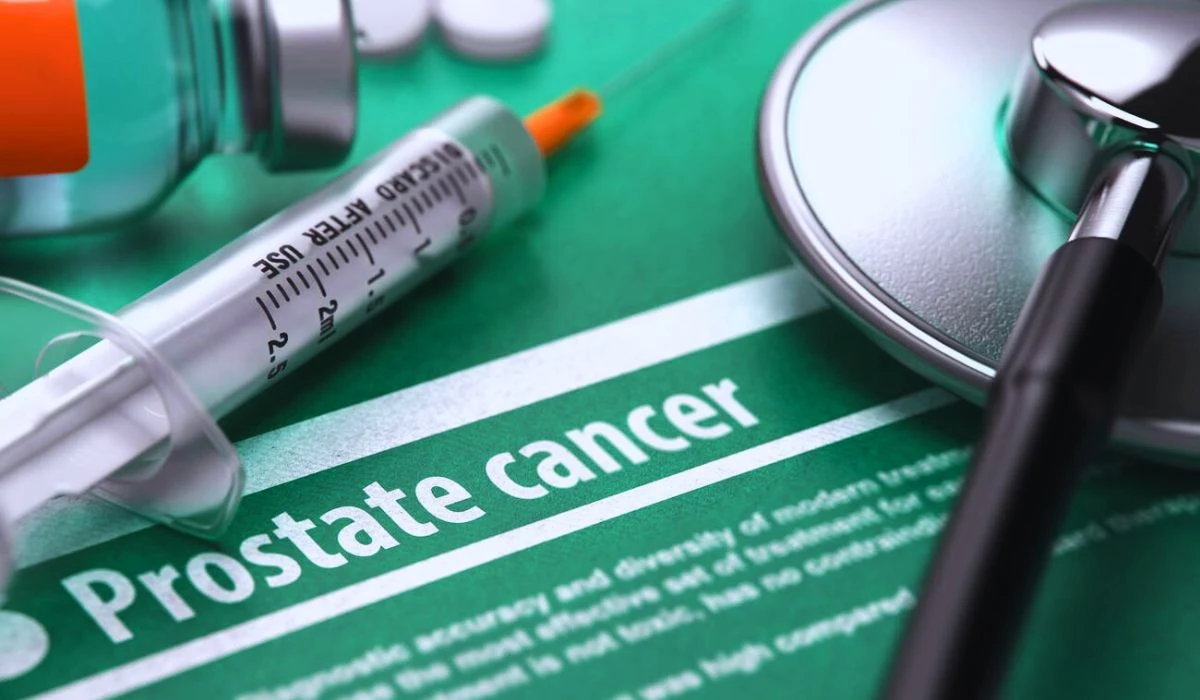Prostate cancer is a malignant tumor in the walnut-shaped prostate gland in male reproductive organs. It occurs when cells grow and divide uncontrollably. Not all prostate tumors are cancerous though – many are benign and pose no risk. However, if left untreated, it can spread and become life-threatening.
It usually affects older men, around 66 years old. African American men are more likely to get it. Early-stage prostate cancer may have no symptoms, but with progression, men may experience urinary issues such as frequent urination, weak flow, pain, or blood in the urine.
Lowering risk or detecting early is key.
- Exercise and a balanced diet with lots of fruits, veggies, and whole grains can help.
- Regular check-ups and screenings like PSA tests can detect abnormalities before symptoms show. Early detection increases the chances of survival.
Family history is important. If fathers or brothers had prostate cancer, there’s increased risk. So, talk to healthcare providers and get regular screenings, starting at an earlier age.
Symptoms Of Prostate Cancer
To identify potential risks and treatments, dive into the Symptoms of Prostate Cancer. Common Symptoms and Less Common Symptoms will be explored, shedding light on the various indicators of this condition.

▶️ Common Symptoms
Prostate cancer can manifest in various ways, so it’s important to recognize the common symptoms. These indicators are a cause for concern and shouldn’t be ignored.
- Urinary Problems: If you’re having frequent urges to pee, especially at night, a weak or interrupted urine flow, trouble starting or stopping when you pee, or blood in your urine or semen, it could point to prostate cancer.
- Erectile Dysfunction: Issues getting or maintaining an erection may suggest prostate cancer. That’s because the tumor could be pressing against nerves that help you get erections.
- Pain and Discomfort: Prostate cancer can cause pain or discomfort in your pelvic area, lower back, hips, or upper thighs. The intensity of the sensation can depend on the stage of the disease.
▶️ Less Common Symptoms
Prostate cancer can present in unexpected ways. Here are three important signs to watch out for:
- Hematuria: Blood in urine is not typical, but may occur. If you spot pink or red-colored urine, seek medical help immediately.
- Bone Pain: Prostate cancer may spread to bones, resulting in pain. Unexplained pain in your back, hips, or pelvis could be a sign of prostate cancer and must be investigated.
- Lymphedema: Prostate cancer may cause lymph nodes to swell, leading to lymphedema. Keep an eye out for persistent swelling and heaviness in the body and seek medical attention.
Also Check: 6 Diet Tips For Prostate Health – Factors To Improve Prostate Health!
Diagnosis Of Prostate Cancer (Screening Tests)
Screening tests for prostate cancer are crucial for diagnosis. They detect if cancer is present or not, allowing for timely intervention. Here are 5 facts about these tests:
- PSA Test: This blood test measures PSA, a protein produced by the prostate. High levels may mean cancer.
- DRE Exam: A doctor checks the size and texture of the prostate with their finger. Abnormalities could mean cancer.
- Fusion Biopsy: MRI and ultrasound combine to target suspicious parts of the prostate for biopsy.
- Genetic Testing: Certain genetic mutations can increase cancer risk. Tests can assess these mutations.
- Gleason Score: A score from 2-10 tells how aggressive or advanced the cancer is.
Treatment Options For Prostate Cancer
To explore treatment options for prostate cancer, delve into surgery, radiation therapy, hormone therapy, chemotherapy, and alternative and complementary treatments. Each of these sub-sections offers potential solutions to address the unique challenges posed by prostate cancer, ensuring comprehensive care and support for patients.
✅ Surgery
- Radical Prostatectomy: This procedure involves taking out the prostate gland, seminal vesicles, and nearby lymph nodes. It can be done by open, laparoscopic, or robotic-assisted surgery.
- Risks and Benefits: There are risks like bleeding, infection, incontinence, and erectile dysfunction. However, it can take out cancerous tissue and provide a chance for cure or long-term control.
- Post-Surgery Recovery: People may experience pain and need to use a catheter for urine until healing. Follow-up visits and monitoring are needed during this period.
- Adjuvant Therapy: Extra treatments like radiation or hormone therapy might be suggested after surgery to target any remaining cancer cells or reduce the risk of recurrence.
- Considerations for Treatment Choice: The decision to have surgery depends on the cancer stage, health condition, age, and individual preferences.
- Early Detection: Regular screenings and awareness campaigns are essential for early detection. Stories of those who have had successful surgery can inspire and motivate others to explore treatment options with hope and determination.
✅ Radiation Therapy
Radiation therapy is an effective treatment for prostate cancer. High-energy rays are used to target and kill cancer cells. Surgery might not be possible, or the cancer could have spread beyond the prostate, so radiation therapy is a great option.
✅ Hormone Therapy
| Medication | Purpose | Possible Side Effects |
| LHRH Agonists | Lower testosterone | Hot flashes, reduced sex drive, fatigue |
| LHRH Antagonists | Lower testosterone quickly | Hot flashes, breast tenderness, fatigue |
| Anti-androgens | Block androgen effects on cancer cells | Diarrhea, nausea, liver problems |
✅ Chemotherapy
Chemotherapy uses strong medications to target rapidly dividing cells, such as cancer cells. It can be given in different ways – through a vein, orally, or directly where the cancer is. The aim is to shrink the tumor, ease symptoms, and slow the disease down.
It can also affect healthy cells, leading to side effects. But, modern medical tech has created supportive treatments to help manage these.
To reduce the effect of chemotherapy on healthy cells, doctors use a combination of treatments. This includes combining different chemo drugs, or chemo with radiation therapy or hormone therapy.
Patients need to follow their doctor’s advice to limit side effects. This includes a healthy lifestyle, balanced diet, hydration, rest, and seeking support from healthcare professionals or support groups.

